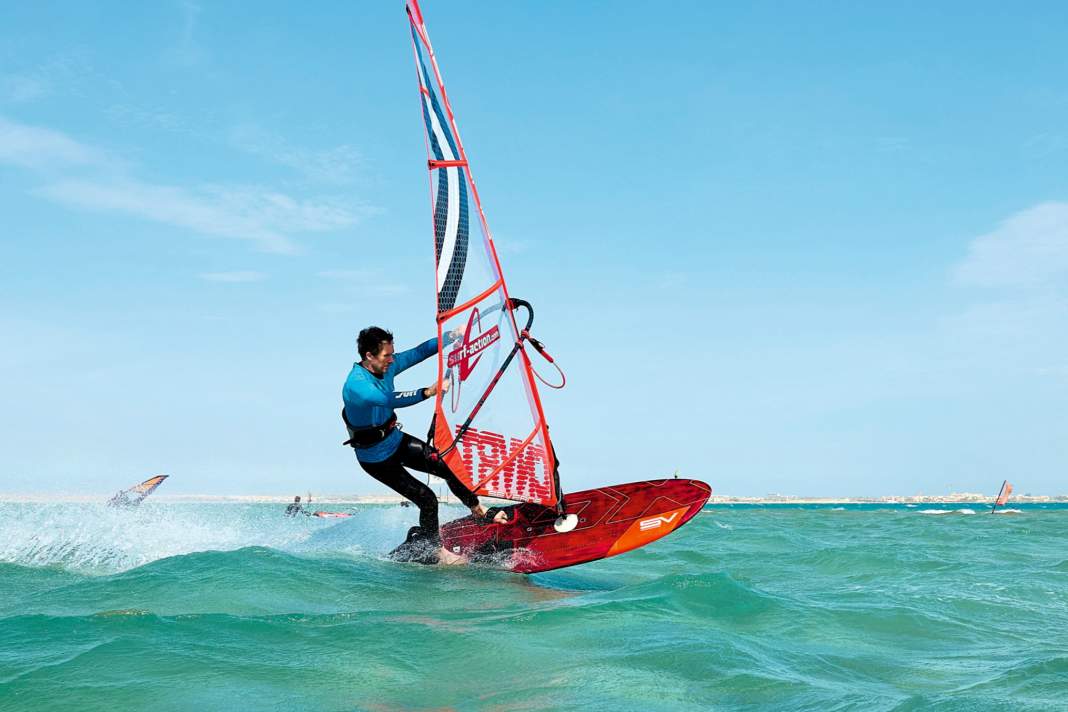





Mirror-smooth water, steady wind - you'll be pulling curves like the proverbial hot knife through butter. Unfortunately, the reality is often different, as short, steep chop is part of everyday life at many spots. However, because with every planing manoeuvre downwind there inevitably comes a moment when you have to overtake the wind waves from behind, the right technique is essential when carving. It doesn't matter whether you're tinkering with the power jibe, celebrating classic moves such as carving 360s or duck jibes or even want to ride waves frontside to leeward on a small board - the basic technique is always the same.
To make sure you carve successfully and don't feel like you're riding a rodeo on a bucking horse, we've put together the most important tips and typical mistakes for you here. In the gallery you can see each section in detail with precise instructions
If you press too hard, the edge will dig into the chop. If you have too little body tension, your board starts to bounce. So it's all about the right dosage."
The biggest mistakes in carving
Almost everyone knows the problem: when initiating a turn downwind, the board starts to bounce uncontrollably on the tail and brakes so hard that gliding through is out of the question. Three mistakes are usually responsible for this.

- 1) Legs too stretched: To keep the board steady when overtaking the chop, your legs have to act as shock absorbers. So actively push your knees forwards and cushion the chop's blows.
- 2) Sail too open: Your sail must provide traction so that you can glide through your manoeuvre. Ideally, the propulsion of the rig (see picture below) also ensures that you are pulled towards the inside of the turn. So here's a tip: before initiating the carve, reach back towards the outhaul with your back hand on the boom and actively pull tight.
- 3) Arms tightenedWhether it's power jibes, classic moves or wave riding - for the board to carve cleanly, as much edge as possible should grip the water. This is another reason why the basic rule "let the sail pull you" is so important. Out of respect for the speed, the arms are often bent when initiating a turn. This causes the weight to move backwards, the board bounces on the tail and the speed is stalled. The key to more control is the front arm. If you stretch it out almost all the way while carving and pull tight with your back hand, your sail will pull you towards the inside of the turn and forwards. This gives you more edge grip and the board runs like on rails and with more speed through the turn. Try it out!
If you don't glide through at the end of a manoeuvre, you've often already made the mistake at the beginning."

